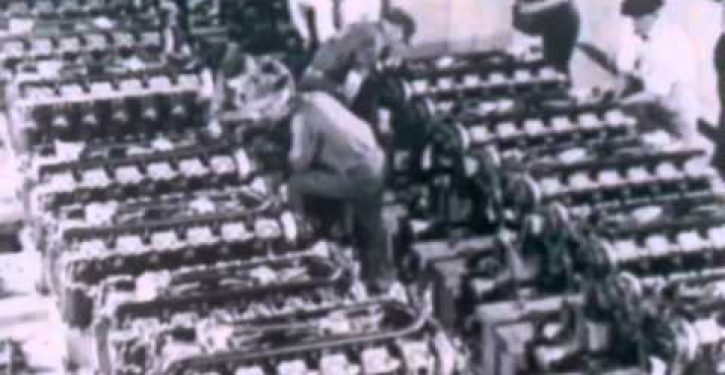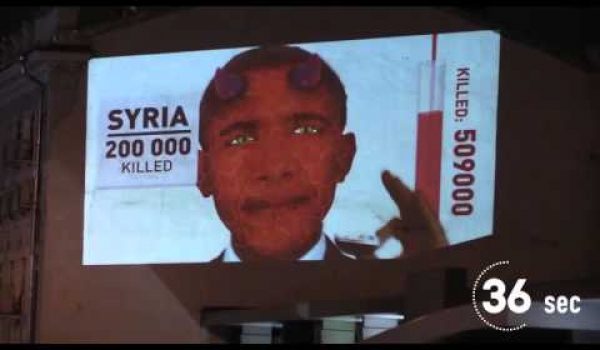
The Lockheed Martin F-35 Lightning II didn’t make the transit in the direction you probably imagine.
Nor did it make an expeditious flight. It’s an Italian-built F-35, one of the first delivered (in December 2015), and it actually started out from Italy on Tuesday, and got to Patuxent River, Maryland on Friday, after delays from maintenance issues and weather. The final leg of its journey was a seven-hour hop from Lajes, in the Azores, the island chain in the eastern Atlantic governed by Portugal. (A charming place, by the way.)
Properly speaking, the F-35 program is never going to replicate Charles Lindbergh’s pathbreaking feat from 1927. The combat radius of the jet fighter is too short for a non-stop, solo, intercontinental flight across the Atlantic. So that, per se, is not the point here.
Will this presidential election be the most important in American history?
But it’s worth making a more general comparison. It took Lindbergh and the infant aviation industry less than 24 years from 1903, when the Wright brothers first achieved powered flight at Kitty Hawk, North Carolina, to produce a giant leap for mankind with the historic trans-Atlantic crossing of the Spirit of St. Louis, all the way from Long Island to Paris.
In fact, Lindbergh wasn’t even the first to make an aerial crossing of the Atlantic. He was the first to perform the feat solo, and non-stop from the North American continent to Europe.
In May 1919, a group of U.S. Navy Curtiss “flying boats” made a trans-Atlantic crossing from Newfoundland to the Azores, and then on to Lisbon, Portugal. That expedition – which was troubled, like the F-35’s, by maintenance problems and weather delays – was undertaken less than 16 years after the Wright brothers’ flight on 17 December 1903.
Granted, it’s no big deal to cross the Atlantic anymore. For a plane like the F-35, it’s a milestone that has no operational meaning; it’s more of a sentimental thing for the aviation community.
But for a deeply troubled military program, one plagued with real concerns about the aircraft’s viability in next-generation combat, the length of time it has taken to produce a plane that underperforms, and crosses the Atlantic the same way military planes crossed it 97 years ago, is worth reflecting on.
The Joint Strike Fighter procurement program had its specific programmatic origin in the decision in 1983 to come up with a follow-on to the Marine Corps AV-8 Harrier. The Air Force and Navy were working separately on next-generation fighter programs in the 1980s. The services merged their programs in the Joint Strike Fighter program in the mid-1990s. The JSF strike-fighter was chosen, became the F-35, and had its first flight in 2006, more than 20 years after the inauguration of the Harrier follow-on program.
In 2016, we’re now more than 30 years on from the formal programmatic birth of what became the F-35. The aircraft is seriously troubled, and isn’t operational in the Air Force or Navy yet. The Air Force hopes to declare that the F-35 has reached “initial operational capability” – IOC – later this year. The Navy doesn’t envision IOC until 2019.
Allan Bourdius has a superb summary of concerns about the F-35 at Hot Air today. He rightly points out that leading politicians’ embrace of the F-35 is, well, political, and may be a liability to national defense in the future.
But if we zoom out a level, I think we see a greater concern. For one thing, the world, as we speak, is assembling bigger security problems for the United States than the F-35, and it’s going to be those problems that bite us in the butt in the next few years.
Where those problems will be hitting us is right in the extraordinary and painful slowness with which we react and get anything done today. We’ve become a polity that lays out red carpets for moral hazards the size of Mount Everest, but whimpers in terror over the fear of risks the size of a pea.
Read the account of the Navy-Curtiss flight in 1919. The mere idea of undertaking such a flight in 2016 would be all but illegal. The only way to get from Kitty Hawk to the NC-4 expedition in less than 16 years was to have a more courageous, more optimistic, more independent, less risk-terrified perspective on life itself.
Conversely, if American life had been as overlaid with politicized bureaucracy 100 years ago as it is today, it’s very unlikely that the flights of 1919 or 1927 could have happened. It’s even possible that the aviation-based “connectedness” of the globe, which drove key security concerns underlying World War II, would not have emerged as a decisive factor in the short time it did.
Politicized bureaucracy is always about keeping us “safe,” averting risk, and trying to rigidly control outcomes. Some amount of it is inevitable in government procurement, given that there must be mechanisms for accountability when the taxpayers’ money is being spent.
But politicized bureaucracy produces the F-35, and is antithetical to vision, heroism, and initiative. It’s not something to be celebrated, or put on a pedestal and aspired to. It’s certainly not something the people should have to keep blindly paying all the freight costs – and opportunity costs – for. Politicized bureaucracy has crossed the line in America and become the main effort, and its cost, in its current form, is not worth what we get from it – as buyers of jet fighters, or as a society.
Bonus: a 1970 documentary “short” commemorating the 1919 NC-4 flight. Courtesy of Jeff Quitney, YouTube.
https://www.youtube.com/watch?v=K6E696hr420




